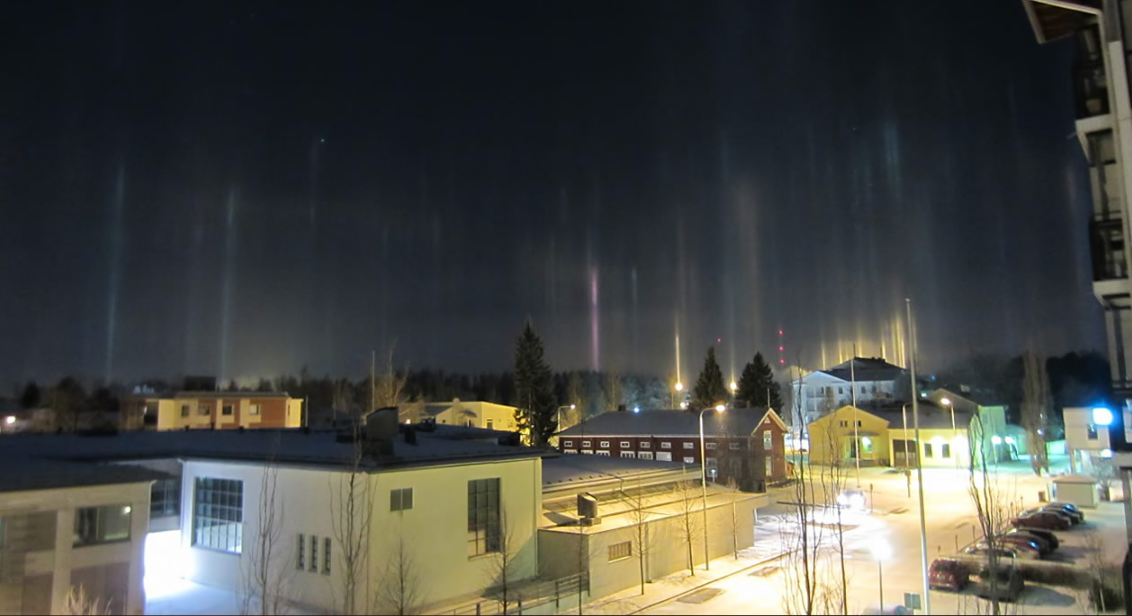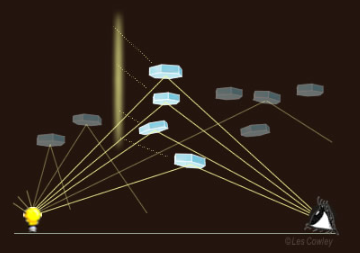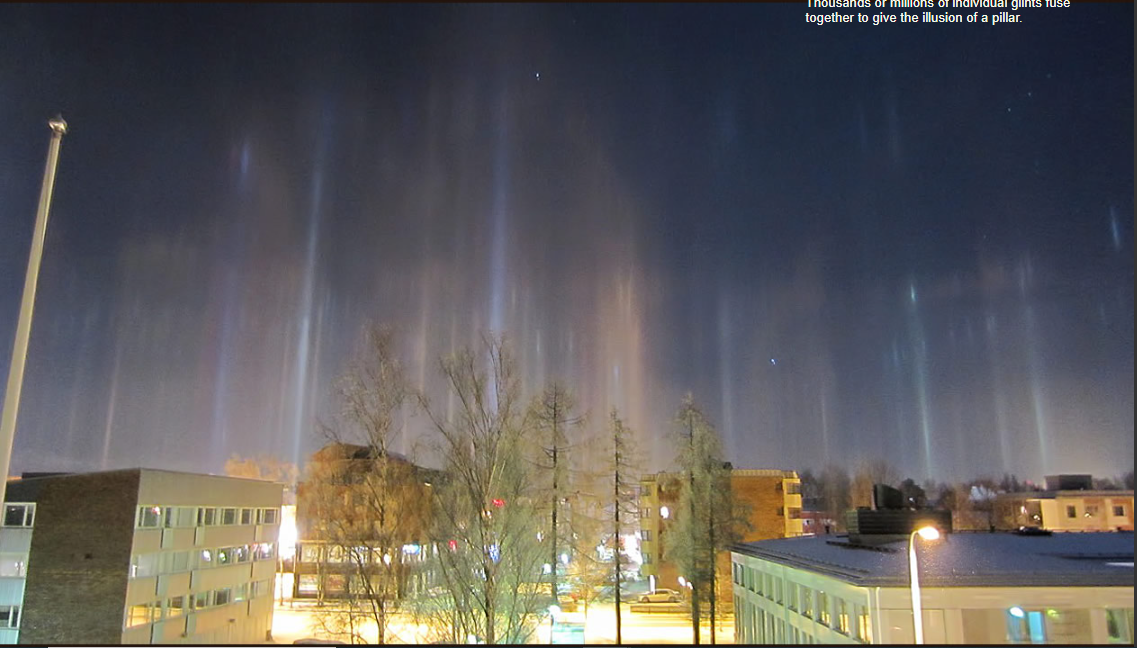Light Pillars, Finland - OPOD
Light Pillars, Finland - OPOD: A Phenomenon of Illusionary Pillars
Light pillars, a mesmerizing atmospheric optics phenomenon, can often be observed in the frosty skies of Finland. These captivating pillars of light are not physical structures but rather optical illusions created by the reflection and refraction of light. Let's delve into the intricacies of this enchanting natural phenomenon and uncover the science behind it.
Light pillars, like other ice halos, exist solely within the realm of perception. They are not tangible objects but rather rays of light that appear to extend vertically into the sky. Contrary to popular belief, light pillars are not beams of light shooting upwards; instead, they are an illusion created by the interaction between ground lights and plate crystals suspended in the sub-zero air.
Plate crystals, or sometimes columns, play a crucial role in the formation of light pillars. These ice crystals float in the chilly air and possess large hexagonal faces that act as mirrors. When ground lights shine upon these crystals, they reflect the light back downwards. The crystals can be oriented almost horizontally, unlike the ones responsible for sun pillars that require a significant tilt. However, tilts can still contribute to the formation of light pillars.
The glinting crystals that catch our eye are positioned approximately halfway horizontally between the source of light and the observer. It is important to note that while we perceive these crystals as a single pillar of light, they are actually thousands or even millions of individual glints that merge together to create the illusion of a solid column. This fusion of countless glimmers is what gives light pillars their ethereal appearance.
To witness the breathtaking spectacle of light pillars in Finland, one must find themselves in a sub-zero environment where plate crystals can form. These icy conditions, combined with a clear night sky and an abundance of ground lights, provide the perfect setting for the manifestation of this awe-inspiring phenomenon. Finland's northern latitudes offer a prime location for observing light pillars, as the long winter nights and icy temperatures create an ideal environment for their formation.
The illusionary nature of light pillars has sparked wonder and intrigue among both scientists and the general public. While we now understand the scientific principles that govern their formation, the visual impact of these radiant pillars continues to captivate and mesmerize. Light pillars serve as a reminder of the beauty and complexity of the natural world, showcasing the interplay between light, ice, and our own perception.
In conclusion, light pillars in Finland are a captivating atmospheric optics phenomenon that appear as illusory vertical columns of light. These pillars are not physical structures but rather an optical trick created by the reflection and refraction of ground lights on plate crystals suspended in sub-zero air. Thousands or millions of individual glints merge together to form the appearance of a solid pillar, which is an enchanting sight to behold. The allure of light pillars serves as a testament to the intricate wonders of our natural world, reminding us of the profound beauty that can be found even in the coldest and darkest of nights.

When is a pillar not a pillar? ~ "Light pillars" imaged on 13th January by Harri Nuolivirta at Seinäjoki, Finland. Another image below. Images ©Harri Nuolivirta, shown with permission
What is real?
Like all the ice halos, light pillars exist only in our eye and brain and arguably the focal planes of cameras.
They are rays of light in particular directions that reach the eye. They have no other corporeal existence. They are definitely not beams of light shining upwards!

Plate crystals (sometimes columns make them) floating in the sub-zero air they reflect ground lights back downwards from their large hexagonal faces.
The crystals can be nearly horizontal. Unlike those forming sun pillars they do not necessarily have to have large tilts - but tilts can nevertheless help.
The glinting crystals that we do see (others glint too but not towards our eye) are roughly half way horizontally between the culprit light and the eye.
Thousands or millions of individual glints fuse together to give the illusion of a pillar.

Note: this article has been automatically converted from the old site and may not appear as intended. You can find the original article here.
Reference Atmospheric Optics
If you use any of the definitions, information, or data presented on Atmospheric Optics, please copy the link or reference below to properly credit us as the reference source. Thank you!
-
<a href="https://atoptics.co.uk/blog/light-pillars-finland-opod/">Light Pillars, Finland - OPOD</a>
-
"Light Pillars, Finland - OPOD". Atmospheric Optics. Accessed on April 19, 2024. https://atoptics.co.uk/blog/light-pillars-finland-opod/.
-
"Light Pillars, Finland - OPOD". Atmospheric Optics, https://atoptics.co.uk/blog/light-pillars-finland-opod/. Accessed 19 April, 2024
-
Light Pillars, Finland - OPOD. Atmospheric Optics. Retrieved from https://atoptics.co.uk/blog/light-pillars-finland-opod/.